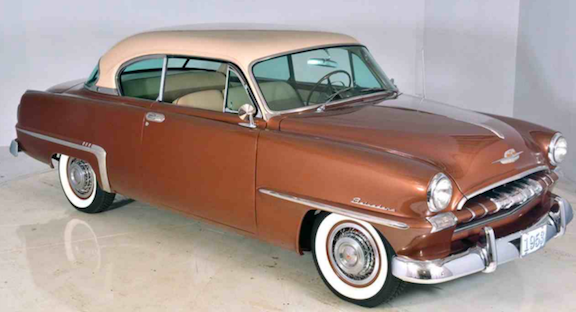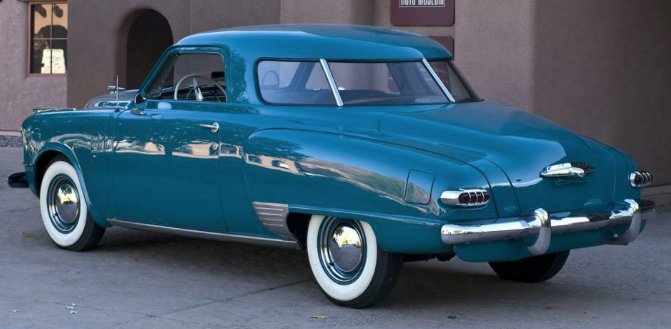In
this post dealing with 1958 Pontiacs, I stated:
"General Motors was rich during the 1950s because it dominated the American automobile market. So when it made a marketing mistake it was able to throw money at the problem to correct it.
"A case in point was the body type used by 1958 Chevrolets and Pontiacs. This was during the last years of Harley Earl's reign as GM's styling supremo. Normally adept at leading styling trends, by the mid-1950s Earl began losing his touch, running out of new ideas. In part this was because the design evolution of the 1930s and 1940s had run its course, so it wasn't clear to those who had lived through that era what might be done next. In Earl's case, he reverted to the rounded (large radius curves) kind of shapes that he usually preferred. Unfortunately for him and GM, Chrysler Corporation's new slim 1957 line proved hugely popular while making GM car seem bloated and stodgy. So GM launched a crash program to redesign all its cars in a somewhat Chrysler-like manner for the 1959 model year."
I wrote about General Motors' 1959 redesigned line
here,
here and
here.
And I discussed exterior trim variations on 1958 Chevrolets
here.
The present post presents 1958 Chevrolets and Pontiacs in the context of their previous 1955 redesign and, briefly, their 1959 replacement. I focus on entry-level two-door sedan models because their basic shapes were less cluttered by ornamentation than upscale lines. Unless noted, images are of for-sale cars.
Gallery
1955 Chevrolet One-Fifty Utility Sedan - Mecum auction photo
This car is about as basic as possible, but disregard the non-stock bent-up front bumper. No chrome side trim. No chrome covering the windshield and backlight window rubber strips.
1955 Pontiac Chieftain
In those days, major brand identification features were on the front and rear. Though side trim also was used for that purpose, as can be seen here. Since Pontiac was one step above Chevrolet in GM's brand hierarchy, this introductory two-door sedan has chrome trim around the windows. The fenderline dip by the rear side window is retained, but wheel openings differ and a small hump to the fender's rear was added.
1958 Chevrolet Delray - Mecum
Here is an entry-level '58 Chevy. Most had some chrome side trim, as can be seen in a photo farther down.
1958 Pontaic Chieftain Catalina
I couldn't find a decent side view of a '58 Chieftain two-door sedan, so this two-door hardtop coupe image will have to do. The main difference is that the 2-door sedan's C-pillar lacks the horizontal-band chrome element seen here: instead it has paint there.
1959 Chevrolet Biscayne - Mecum
As was described here, General Motors produced the following body types that were shared by most brands: two-door sedan, four-door sedan, two-door hardtop, four-door hardtop, two-door convertible, and station wagon. One exception was Cadillac, which did not use sedan or station wagon bodies. However, all GM bodies featured the double-wrapped (horizontally and vertically) windshields.
1959 Pontiac Catalina
This two-door entry-level Pontiac shares the passenger compartment greenhouse with the Chevrolet above, as well as wheel opening profiles. Other sheet metal sculpting is Pontiac-only.
1955 Chevrolet One-Fifty - unknown source
Front quarter view of a '55 Chevy Utility Sedan. These basic bodies were used by Chevy and Pontiac through the 1957 model year. Very simple body stampings. Bear in mind that stamping technology in those days was primitive compared to what we have today.
1955 Chevrolet One-Fifty Utility Sedan - Mecum
Rear quarter view. Again, note the simplicity of the basic '55 GM A-Body compared to the 1958 cars below..
1958 Chevrolet Delray - Mecum
Most '58 Delrays had side chrome trim such as is seen here.
1958 Chevrolet Delray - Mecum
Also, there was considerably more metal sculpting than found in 1955.
1958 Pontiac Chieftain - unknown source
The wheels and tires are not stock. This photo shows the C-pillar paint scheme discussed above.
1958 Pontaic Chieftain
The basic body is the same as the '58 Chevy's, but GM could afford tooling for different sculpting.
























































